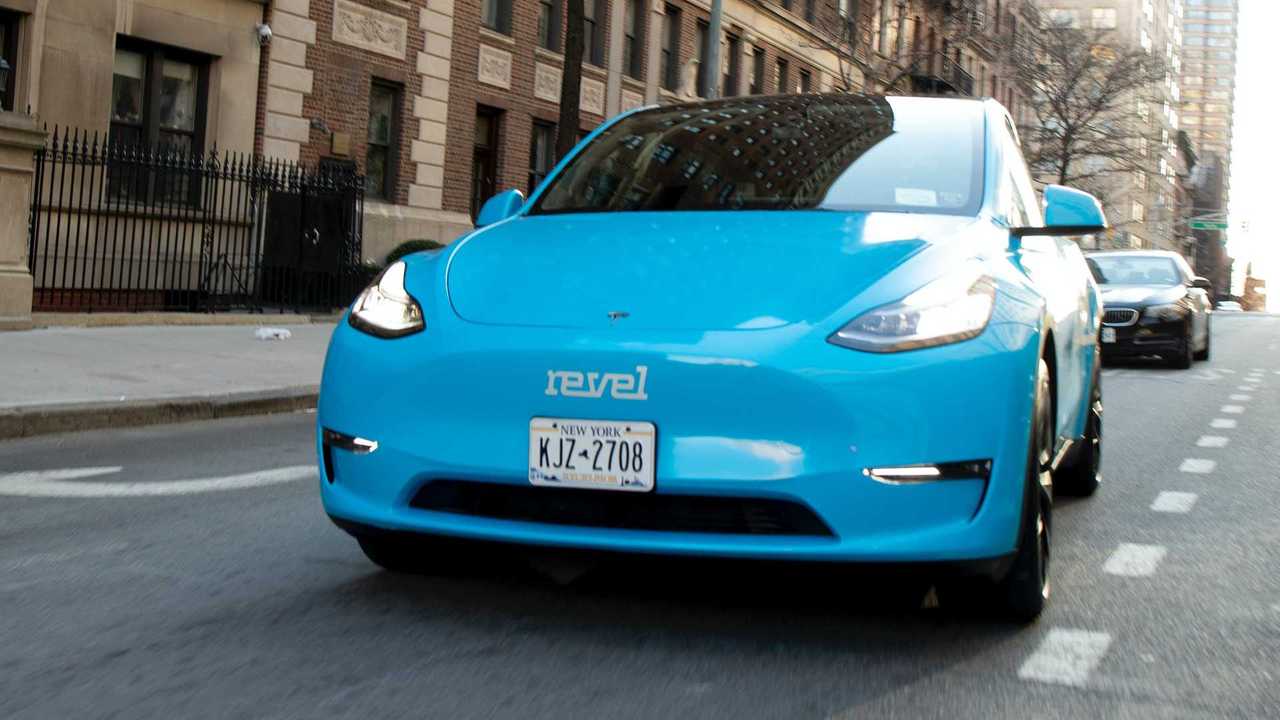If you’re a curious New York City resident or visitor, you’ve likely heard the faint hum of traction motors emanating from electric cars with Taxi and Limousine Commission (TLC) registration plates.
Mostly Tesla Model 3s and Model Ys, but also some Toyota bZ4xs and Polestar 2s among others, these EVs are everywhere in the five boroughs of the world’s financial and cultural capital. They ferry customers in near-silence, leaving no trail of no planet-warming fumes. Nearly 25,000 all-electric and hybrid Uber, Lyft and other rideshare cars now ply in NYC and these drivers are going all guns blazing with usage rates.
Get Fully Charged
NYC’s massive undertaking to electrify yellow cabs.
To curb emissions from transportation, electrifying commercial fleets and rideshare/ride-hail cars is as important as making private cars go green. NYC is leading that charge with the largest fleet of rideshare cars in the country, which is now covering millions of EV trips monthly, saving hundreds of thousands of gallons of planet-warming gas.
The New York City Taxi and Limousine Commission—the agency responsible for licensing and regulating yellow taxi cabs and for-hire vehicles (FHVs), commuter vans, and paratransit vehicles—announced yesterday that rideshare EV trips surpassed two million in March alone. That’s double from a million trips covered in January.
This comes after the City of New York passed its Green Rides Initiative, mandating all new for-hire vehicles (FHV) to be electric from November 2023 onwards. The rules led to a sudden surge in FHV license applications, with NYC TLC’s daily intake soaring from 150 to 2,000 applications overnight, a TLC spokesperson told InsideEVs early this year.
From an emissions perspective, these rules are reaping huge benefits. Since November, monthly EV trips increased fivefold, from 362,000 before.
EV trips in the first three months of the year have saved some 6,500 metric tons of carbon dioxide (CO2) emissions, covering 25 million miles in zero emissions trips. That’s the equivalent of saving 731,000 gallons of gas, according to the NYC TLC. It’s also equivalent to “carbon sequestered by 107,000 tree seedlings for about 10 years.”
- Two million EV rideshare trips in March 2024.
- 25 million zero-emissions miles covered.
- 731,000 gallons of gas saved in Q1 2024.
The Green Rides Initiative initially aimed to electrify five percent of the rideshare fleet in 2024, increasing to 15 percent in 2025. However, due to an overwhelming response from FHV drivers, NYC TLC attained that goal in January 2024, two years ahead of schedule—the current penetration of electric and wheelchair-accessible vehicle (WAV) trips stands at 17%.
When TLC passed the new rules in October 2023, thousands of drivers jumped at Teslas. But an InsideEVs investigation found that they were getting little charging support in return.
At one Tesla Supercharger in Brooklyn, drivers were waiting up to 90 minutes to recharge their EVs due to long lines and limited charging options with no parking fees. This left them frustrated, as some of them were losing up to two hours of business daily due to “traffic jams” at overcrowded charging stations.
Realizing the massive need to improve these drivers’ charging experience, the TLC and the City of New York are slowly investing in charging infrastructure.
Recently, ride-hail startup Revel—which operates neon blue Teslas in the city—announced a project to build the largest fast-charging site by an airport in the U.S. It will be located at the LaGuardia airport in Queens. Google-backed charging start-up Gravity’s 500-kilowatt round-the-clock fast-charging site opened in February in Times Square—this one is the fastest charging station in the U.S.—InsideEVs tried it out recently.
The NYC Department of Citywide Administrative Services (DCAS) also recently opened five new Level 3 chargers at the World’s Fair Marina parking lot, close to the Flushing Meadows Corona Park in Queens.
Contact the author: suvrat.kothari@insideevs.com
New York City’s Electric Rideshare Cars Surpass Two Million Trips In March
New York City’s electric rideshare cars have reached a major milestone in their journey towards sustainability and reducing carbon emissions. In the month of March, these vehicles surpassed two million trips, marking a significant achievement for the city’s efforts to promote cleaner transportation options.
The increasing popularity of electric rideshare cars in New York City is a testament to the growing demand for environmentally-friendly modes of transportation. With the city’s ambitious goal of becoming carbon neutral by 2050, the adoption of electric vehicles has become a crucial step towards achieving this objective.
One of the key factors contributing to the success of electric rideshare cars in New York City is the accessibility and convenience they offer to residents and visitors alike. With an extensive network of charging stations throughout the city, drivers can easily find a place to recharge their vehicles, making electric rideshare cars a viable and practical option for everyday transportation needs.
Furthermore, the availability of electric rideshare cars has also played a significant role in reducing traffic congestion and improving air quality in the city. By encouraging more people to use shared electric vehicles instead of traditional gas-powered cars, New York City is taking a proactive approach towards addressing the adverse effects of urban pollution and gridlock.
As the demand for electric rideshare cars continues to grow, it is clear that New York City is on the right track towards achieving its sustainability goals. By providing residents and visitors with a cleaner and more efficient transportation option, the city is not only improving the quality of life for its inhabitants but also setting an example for other cities around the world to follow.
In conclusion, the milestone of two million trips taken by electric rideshare cars in New York City in the month of March is a cause for celebration and a clear indication of the city’s commitment to a more sustainable future. With continued support and investment in electric vehicles, New York City is well on its way to becoming a greener, cleaner, and more efficient metropolis for generations to come.

